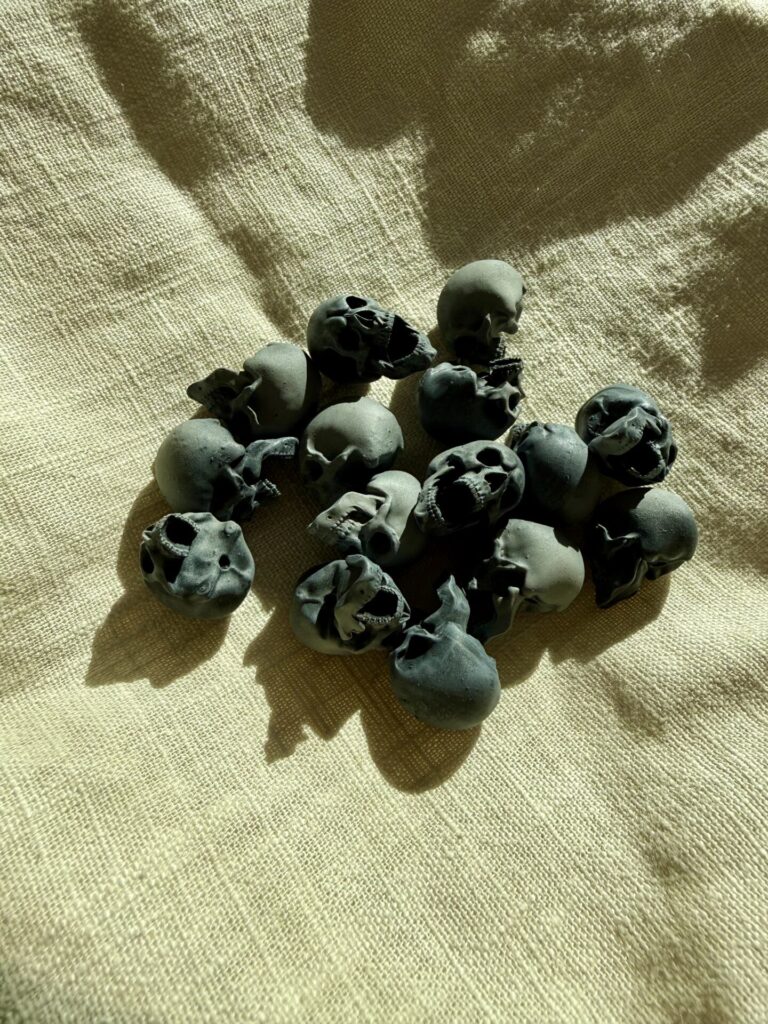Daggerheart feels to me like a version of modern (4-5th edition) Dungeons & Dragons that’s more closely aligned with how I like to run games these days, and how my table likes playing games – heavy on roleplaying. Reading the book, I was excited to run it, and now I have.
I like all the campaign frames in the book a lot, and ultimately decided to go with Age of Umbra first – there’s a Witherwild game coming up, as well. I listened to Critical Role’s Age of Umbra show and liked the mood and the desperate boss fights. I have history with the Dark Souls series, and combining its kind of bleak fantasy with modern heroic fantasy sounded like a fun challenge.

I have four players, all with varying degrees of experience in modern heroic fantasy. They created a very colorful group:
- a living, winged statue of justice (Clank Seraph/Winged Sentinel)
- a tank of a toad (Ribbet Guardian/Vengeance)
- an unreliable faun (Faun Rogue/Syndicate)
- and an angry moth with a pet monitor lizard (Faerie Ranger/Beastbound).
This was one of my initial concerns with the game – as human is just one of 18 ancestries, and there is just one copy of each ancestry in the box, all groups are going to be very diverse. Normally this’d be great for heroic fantasy… but Umbra is supposed to be dark. I was wary of all this zaniness preventing the more sombre mood from taking root.
The colorful (but dark! The Faun looks like they’re out of a Cradle of Filth photoshoot) combinations, all of them unique in the party, added up to a cast that was instantly recognizable. I didn’t struggle to get the characters straight in my head at all, unlike most D&D games I’ve run.
Character creation took a lot longer than I expected. Part of this is just that the game is new to all of us, and part of it is that thanks to the focus on tying the narrative together across the characters – which is very commendable – it just takes a fair bit of discussion to get through. I am very pleased with the outcome, with an exciting cast that feels like they belong in the world, and are already moving in it. They don’t exist in a vacuum.
While Daggerheart is more streamlined than D&D 5E, there’s still a fair bit of mechanics to get straight in your head. I don’t think this was an issue, but the barrier to entry is real in this sort of game, with a lot of frontloading of information, and something a GM should keep in mind. If I had more time, I’d structure the onboarding with one element at a time.
Gameplay worked really well. Hope and fear results from player rolls kept things interesting at all times, and brought a tension to every roll. It felt very appropriate for Umbra, specifically, and I’m interested to see how it feels in the other campaign frames.
We spent a good while roleplaying the characters getting together and getting ready to get underway (there was a somber drinking and singing soirée), and I realized I’d need to compress my schedule to get a fight in, which I wanted to do.
In a D&D game I would’ve been very hesitant to launch into a mini bossfight with less than an hour on the clock. Here it proved a non-issue. The entirely theatre of mind fight moved fast and flowed very naturally. My baddie got to use all their powers, too, making for a cinematic experience with plenty of scares and flourishes. I didn’t time it, but I’d say we were done in less than half an hour.
My players loved the tag team attacks and came up with three in the single fight! I can see this is something they’ll keep doing, as it’s just a lot of fun to think about how the characters would achieve things together, and what the choreography says about them. All characters also used their signature powers, which is not a given at all in a low level D&D game.
Which leads me to something I found a triumph, but it comes with a word of warning. All players and myself loved how freeform the game played, without the mechanics forcing things on us, and allowing for everyone to use their imagination and fully express themselves. It’s great! But it requires everyone to be fully present and ready to come up with things. Thanks to the Duality Dice spelling either hope or fear out of every roll, the GM needs to be ready to twist every single outcome into a surprising direction. This makes for very dramatic and fun play… but I can see how it could become taxing, too. For now I managed it by limiting the amount of rolling we’re doing, just as the book instructs you to do.
My plan is to play two more games of this, and another three of Witherwild. As first impressions go, I couldn’t be much happier! Downsides: the character creation was a little messy, and some of the mechanics could’ve been easier to approach.
Leave a Reply to VCancel reply